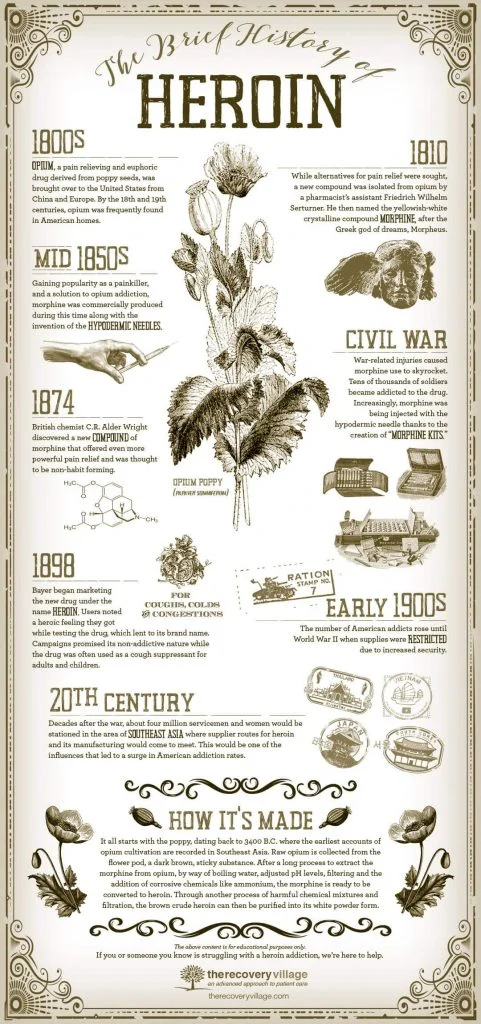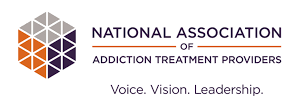Heroin has an interesting history. Learn about how heroin was initially used, how it was invented and why it’s illegal in some countries and not in others.
Heroinhas had a long and interesting history. It wasn’t always an infamous street drug. Heroin is still used medically in some countries. The drug’s history is interesting and having an understanding of the past can allow people to better understand the drug’s impact on society today.
Article at a Glance:
- Heroin is derived from morphine, a substance found in opium poppy seeds
- Opium was used for thousands of years, but heroin was invented in 1874
- In the United States, heroin was originally used for pain relief but was banned in 1924 due to its addictive properties
- Since 2002, heroin use and overdose deaths have been rising in the United States
- With proper treatment, the success rate for heroin recovery is very high
The Heroin History
Although heroin itself wasn’t invented until 1874, thehistory of its predecessors— opium and morphine — go back about 5,400 years. Starting around 3400 B.C., opium poppies were grown by the Mesopotamians and Sumerians in what is now the Middle East. From there, it spread to many other cultures, including Egypt, Greece, and India. Western civilizations, including the British Empire, obtained much of their opium from India.
The Invention of Heroin
Around 1805, the French pharmacist Friedrich Sertürner discovered how to isolate one of opium’s active ingredients:morphine. Morphine was used widely to treat pain and to cureopium addictionbefore its own addictive properties were known. Morphine saw use in the United States during the American Civil War when it was used to manage pain from battle wounds.
In 1874, the English chemist Charles Romney Alder Wright performed experiments that involved mixing morphine with different acids. He invented a new chemical called diacetylmorphine, also known as diamorphine or heroin. This drug was similar in structure to morphine but was two to three times stronger.
New Year, New Beginnings.
Whether you are struggling with addiction, mental health or both, our expert team is here to guide you every step of the way. Don’t wait— reach out today to take the first step toward taking control of your life.
Where Does Heroin Come From?
Like many otheropiates, heroin comes from the opium poppy. Opium, frompoppy seeds, contains several opioid compounds, including morphine andcodeine. Morphine is extracted from opium using diluted acid. Reacting morphine with other acids creates heroin. Essentially, heroin is morphine with a small chemical compound added to it.
Heroin in American History
Heroin was first used in the United States as a pain medication. Originally, doctors used heroin in cough medicine, as pain relief for childbirth and to put surgery patients in states of stupor or unconsciousness. It was also used to treatmorphine addictionbefore the addictive properties of heroin became known.
The pharmaceutical company Bayer first used the term “heroin” as its brand name for the drug in 1898. People who took the drug remarked how they felt a heroic feeling while they were on it. Bayer marketed heroin across the country as a non-addictive pain medication. Until the 1920s, it was prescribed to adults and children as cold medicine and for other pains.
When Did Heroin Become Illegal?
After a few decades of legal use, heroin use and misuse rose rapidly. It became clear that heroin was a highly addictive substance. The United States government made heroin illegal in 1924. It remains illegal to this day.
Facts About Heroin
Despite being illegal since the 1920s, heroin use continued in the United States and worldwide. However, in some countries, doctors may prescribe heroin legally to manage heroin or opioid addiction in a controlled manner. Other countries are investigating and considering adopting prescribed heroin therapy to reduce overdose deaths and diseases from needle sharing.
Heroin in Other Countries
Heroin is used around the world. However, the stigma and perceptions associated with it vary in different countries. Heroin use varies from country to country:
- Germany, Switzerland, the United Kingdom, Denmark, and the Netherlands: Doctors use controlled doses of heroin to treat otherwise unmanageable opioid addictions successfully.
- Canada: Illegal use of heroin is on the rise. A pilot program is testing giving medical-grade heroin to people living with heroin addictions to prevent overdoses and other dangerous side effects.
- South Africa: Heroin use spiked recently, along with violence and crime. Heroin is often used as a means of escape from the harsh reality of poverty.
- Russia: Negative stereotypes of drug users make treating heroin addiction challenging in the country. A major increase in heroin use is contributing to economic decline, higher rates of HIV/AIDS and a decrease in the population.
- Japan: Heroin use is extremely low as people do not want to compromise their careers and long work hours leave little time for drug use. In the mid-1980s, arrests of suspected heroin users increased by nearly 25 percent, from 29 people total one year to 36 the next.
Heroin Statistics
Heroin usein the United States has been on the rise. The latest statistics on heroin use in the country show that accidental overdoses inflict a major toll, both in healthcare costs and in lives lost. The need for effectiveinterventionis higher than ever.
Heroin Consumer Statistics
In 2017, nearly494,000 peoplein the United States said that they were current heroin users. That works out to about 0.2 percent of the country’s population. As many as886,000 peopleused heroin at least once the previous year. Approximately three out of four heroin users misused prescription opioids before beginning to use heroin.
Heroin Overdose Statistics
From 2002 to 2013, the death rate from heroin overdosesnearly quadrupled, resulting in 8,257 heroin-related overdose deaths in 2013. Of those, 59% involved at least one other drug. The number of heroin-related overdose deaths rose again to over 15,000 in 2017.
The rate of non-fatal heroin overdoses is also high. In 2015,heroin overdosesresulted in 81,326 visits to an emergency room.
Heroin Recovery Statistics
Recovery statistics for heroin use are very promising with the right types oftreatment. After completing treatment,98% of heroin users are free fromaddiction. After three years, 88% are still fully sober.










